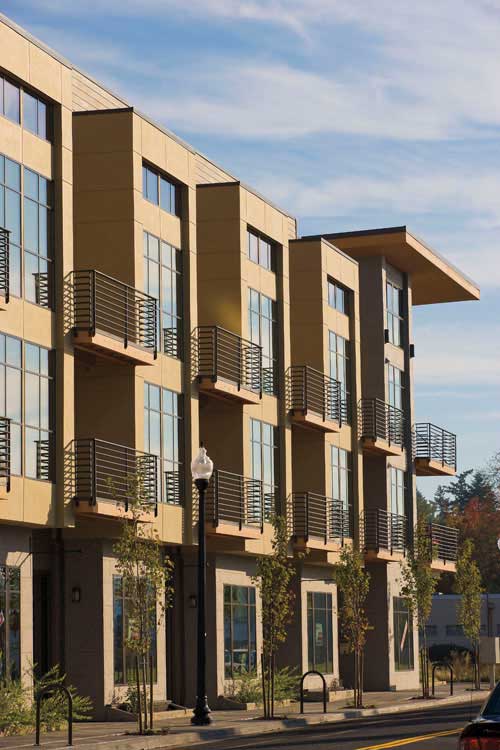Fiberglass Windows: A Sustainable Choice in Non-Residential and Multi-Family Buildings
Learning Objectives:
- Identify and recognize the attributes and features of current fiberglass window technology.
- Determine beneficial and sustainable choices in creating window design patterns and sizes.
- Investigate the use of sustainable fiberglass window units in different window application types in commercial and institutional buildings.
- Specify and design appropriate window installation details for new construction and renovation projects.
Credits:
Selecting a window system for use in new or renovated commercial and institutional buildings has typically centered on aluminum, steel, aluminum-clad wood, or vinyl windows. In the last five years, however, another choice has gained popularity for a lot of good reasons. Fiberglass window systems are being specified and installed more and more in retail facilities, offices, schools, colleges, condominiums, apartments and many other buildings that commonly have relied only on metal window systems in the past. To understand this emerging trend, let's begin by looking at some of the basics of fiberglass window technology.
Natural Materials Blended with Technology
While the term "fiberglass" is used as if it were a single material, it actually is a composite that consists of glass fibers and a resin that binds those fibers together. Glass fiber, made from natural silica and other materials, has a surprisingly high tensile strength. This characteristic has been demonstrated in many building product applications showing it to act like the equivalent of many reinforcing bars in a concrete mix. The resin that is introduced acts like the concrete itself that forms and holds everything together with the added benefit of performing well in compression. Combined together, the glass fibers and resin create a material that is stronger than either of them individually and provides strength in both compression and tension.
A key point to remember is the type of resin used to make the composite fiberglass material. In general, all resins can be put in one of two categories: thermoplastic or thermoset. In simple terms, thermoplastic materials can be re-melted while thermosets cannot. Most commonly used plastics are made from thermoplastic resin including vinyl windows which are made from PVC, a thermoplastic resin. These materials soften as they are warmed and if heated high enough will melt. This is how plastics are recycled. Thermoset materials, in contrast, undergo an irreversible chemical reaction. Often initiated by heat, once this chemical reaction has occurred, thermosets do not soften or melt as they are reheated. Fiberglass composite windows are made using thermoset resin. As a result, fiberglass composite windows can be used in hot climates and can be painted dark colors, even in high sun exposure applications. If vinyl windows are used in these applications, it is possible for the vinyl to soften, causing the material to sag or warp. The term, "vinyl smile," is sometimes used in the industry to describe this phenomenon. This is most often seen when the head of a large span sags after becoming too hot.
 |
Fiberglass windows offer design flexibility for non-residential and multi-family buildings. Photo courtesy of Pella Corporation |










